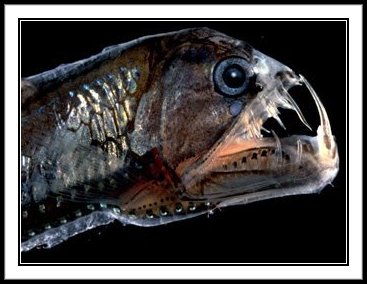- HubPages»
- Travel and Places»
- Visiting North America»
- United States
Mysteries of the Mariana Trench

Tremendous Pressure
More is known by the scientific community about outer space than the oceans on our own planet. This is because of the tremendous pressure exerted on any object attempting to submerge to the great depths needed for further exploration.
The Mariana Trench is the deepest known part of any ocean. It is in the western Pacific Ocean near the Mariana Islands, close to Japan. The deepest part of the trench, at a depth of about 7 miles, called Challenger Deep, was named after the exploratory vessel HMS Challenger II, a fishing boat converted into a sea lab by Swiss scientists.
There have been numerous scientific expeditions to record the depth and study the trench. The trench was first sounded during December 1872 to May 1876 by the first Challenger expedition. The most recent, as of this writing, was in June 2009 using sonar mapping by the Simrad EM120 sonar multibeam bathymetry system for deep water.

How Deep The Trench Is
It’s difficult to imagine how deep the trench actually is. To visualize it, imagine placing Mount Everest inside the trench. There would still be over a mile to reach the surface! The water pressure would be equivalent to about 5 jumbo jets stacked upon top of you. Or about 16000 pounds per square inch.
However, in spite of these facts life has been found there, mostly in the form of single celled organisms. Deep sea research is important because it’ envelopes a huge portion of the planets’ biosphere and so little is known. Life at these incredible depths, temperatures, lack of light and pressures, has had to adapt to the harsh conditions.

Light Organs
Some deep sea creatures are entirely colored black and have light organs called photophores on their bodies. It’s believed they attract the fish they prey upon. Some don't have any color at all making them transparent. The light organs create light by a chemical process called bioluminescence.
Other fish, such as the gulper eel, have a hinged skull. This enables the creature to rotate their head upward to swallow large prey. Their large stomachs can stretch to allow it to digest a fish much larger than itself. Fish existing at these extreme depths must adapt to a low food supply, eating only what sinks down to them from above. Sometimes it becomes necessary to eat each other.
The physical characteristics of the deep are issues deep sea life must contend with to survive. Light, pressure, temperature, oxygen and food have all led to fascinating adaptions. There are some wicked looking fish lurking in these depths. Most have enlarged eyes, to gather as much light as possible because there is little or no light at all. Biologists theorize their vicious looking teeth and jaws were adapted to live in an environment where food is scarce. The strong jaws ensure that prey has no way to escape.
Lack of light also creates a barrier to reproduction. Bioluminescent light is also used to attract mates. Deep sea creatures also often possess a powerful sense of smell to detect chemicals released into the water by potential mates.
Pressures inside fish living this deep are the same as those outside, so they aren’t crushed. These creatures would quickly die if brought to the surface as the cells inside their bodies would promptly burst.
The deep sea was largely unexplored up until recent times. But new technologies and advances in deep sea submersibles along with better imaging devices are allowing marine biologists to better study the mysteries of the deep ocean realm.
The deep cold waters are also oxygen-poor. Therefore, life there requires little oxygen. The creatures that make their home there have some fascinating biological mechanisms. Because of the lack of light, food is scarce in these sectors. Some food comes from decaying plants and animals from the upper regions. Bodies of deceased animals sinking to the bottom also provide meals which are quickly consumed by a variety of species.
The deep sea is inhabited by jawless fish such as the lamprey and hagfish, which burrow into carcasses and consume them from the inside. Energy isn’t usually expended swimming in search of nourishment. They prefer to remain in one place and ambush their prey.
Life is comparatively sparse in the deep with one exception … hydrothermal vent communities. This discovery occurred in 1976 during a deep sea expedition near the Galapagos Islands. Dives to depths of about 2,700 km led to the discovery of an ecosystem where marine life thrived at deep depths without sunlight.
The water near these hydrothermal communities is much warmer than average for this depth. The warmer water comes from geysers heated by magma beneath the earth's crust. Metal sulfides spewed through the vents form chimneys which becomes home to a variety of sea life.
The Mariana Trench has been proposed as a site for disposing of nuclear waste.The solution is technically feasible, but is barred by international law.





